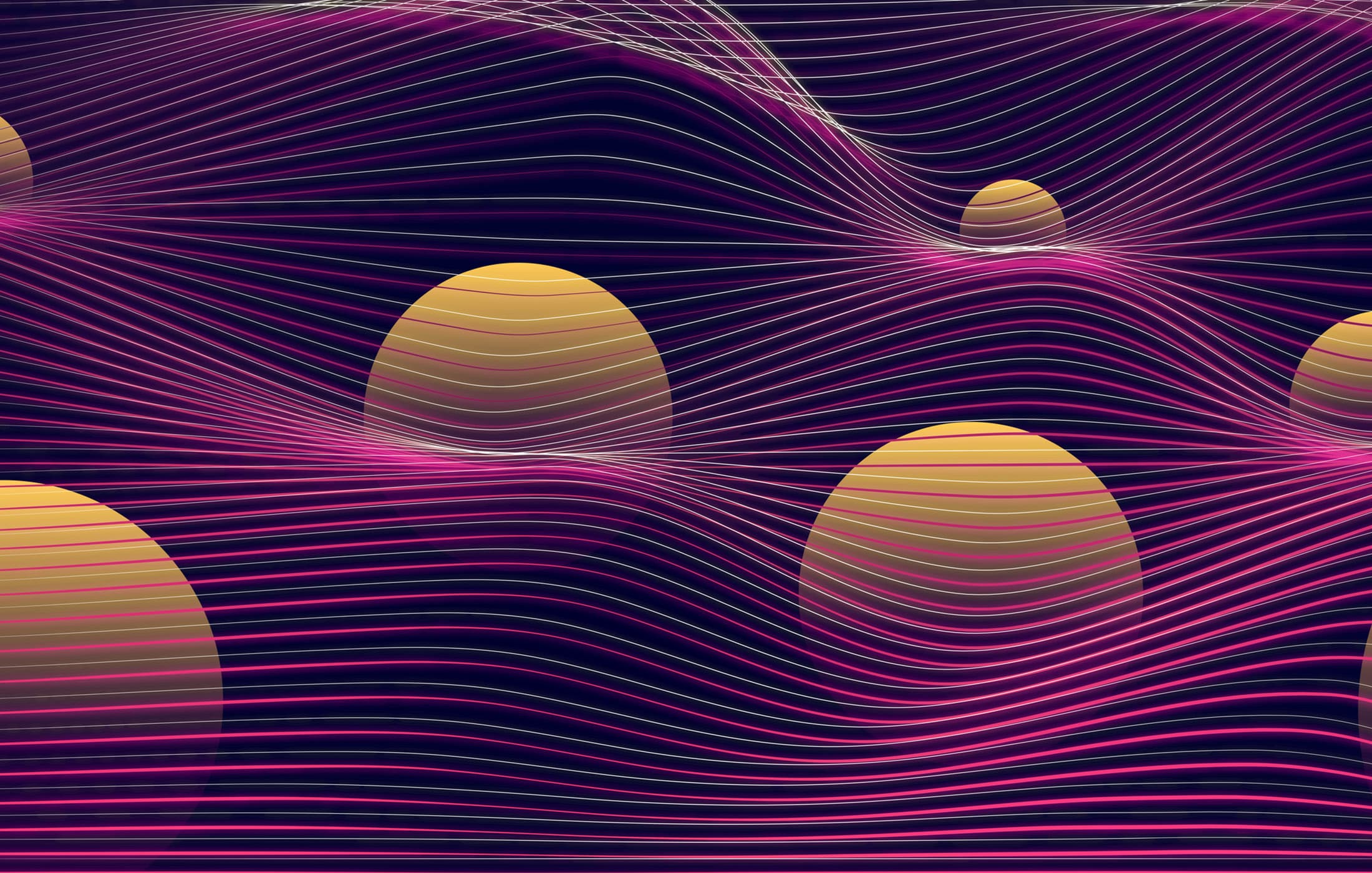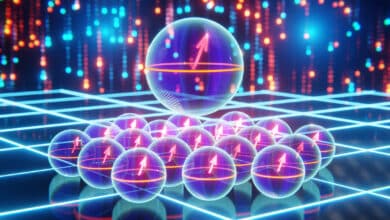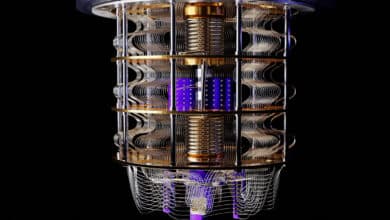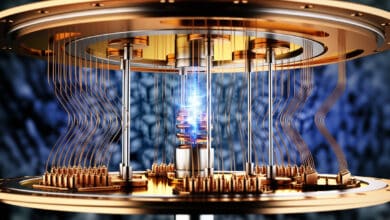Quantum Computing Modalities: Quantum Cellular Automata (QCA)

Table of Contents
(For other quantum computing modalities and architectures, see Taxonomy of Quantum Computing: Modalities & Architectures)
What It Is
Quantum Cellular Automata are an abstract modality of quantum computing where space and time are discrete and quantum information processing happens in many parallel identical cells interacting with neighbors under a uniform rule. It’s a quantum counterpart to classical cellular automata (like Conway’s Game of Life, but quantum). In a QCA, you have a grid (lattice) of quantum systems (e.g. qubits on each site), and the entire grid’s state evolves in discrete time steps according to some global unitary $$G$$ that factorizes into local operations. Typically, each cell updates based on its own state and the state of a fixed neighborhood (like nearest neighbors), and the same update rule applies everywhere (translation-invariance). Importantly, to maintain causality (no information faster than light), the update rule must be locally unitary and not allow influence to propagate arbitrarily fast (usually, a cell’s state at time $$t+1$$ only depends on information within a finite radius of that cell at time $$t$$).
In essence, QCA is like a quantum circuit that repeats across space infinitely (or with periodic boundary). One time step of a QCA could be seen as one layer of a quantum circuit applied in parallel to many blocks of qubits. For example, a simple 1D QCA might involve an update rule: apply a certain 3-qubit unitary to each triple of neighboring cells (with some scheme to cover the line evenly). Doing that for all triples constitutes one time tick.
John von Neumann’s classical cellular automaton concept (1940s) had cells that could do universal computation. The quantum analogy aims for the same: a QCA that can simulate a quantum Turing machine or quantum circuit and thus be universal. In fact, a well-defined QCA model should be able to simulate any other quantum computer with at most polynomial overhead, which is a criterion of universality.
A concrete example: Watrous (1995) proposed a QCA model where each cell is a qubit and the update rule was something like: shift the qubit array by half a cell, then apply a two-qubit gate between pairs, then shift back (similar to how one might implement a line of swap gates and two-qubit gates). This was expanded by others, and indeed it was shown these models could do universal computing. Some early models had issues (e.g. allowing faster-than-light signaling, meaning they weren’t strictly local updates), but later formulations fixed those by strictly enforcing locality and unitarity conditions.
One can also have intrinsically universal QCA, meaning one QCA rule can simulate any other QCA rule given appropriate initial state (similar to how a universal Turing machine can simulate any other Turing machine). Research by Schumacher and Werner, and by Arrighi et al., looked into classification of QCA rules, and found conditions for when QCA are essentially quantum circuits repeating.
Key Academic Papers
The field of QCA was formally initiated by John Watrous (1995), who introduced a framework for one-dimensional QCA and showed it could simulate space-bounded quantum Turing machines. Subsequent work by Pablo Arrighi and others (circa 2010s) provided a thorough formalization, fixing issues and showing how to construct QCA that are intrinsically universal. Arrighi’s recent overview (2019) is a great reference. It outlines the definition of QCA, the symmetry and locality requirements, and surveys known results: e.g. that any QCA can be decomposed into a shift (translation) and a local gate (this is like a structure theorem), and that QCA can simulate quantum circuits with linear overhead, confirming universality.
Another line of work has been on quantum lattice gas automata for simulation (by Boghosian and Taylor, Meyer). These are essentially QCA tailored to mimic physical equations. For example, Dave Meyer (1996) showed a QCA can simulate the Dirac equation (a relativistic quantum equation) exactly on a lattice, something that’s hard to do on classical CA efficiently. This suggested that QCA might be a natural way to do quantum simulations of field theories.
Comparison To Other Modalities
QCA are akin to the circuit model in that they ultimately implement unitary evolutions, but with a few twists:
- Parallelism and Regularity: QCA emphasizes massive parallel updates and a highly regular structure (same operation everywhere). It’s like a quantum SIMD (single-instruction multiple-data) computer. A circuit model is more flexible in applying different gates at different locations at different times, whereas a QCA often uses the same gate for all cells at each tick (though some models allow varying patterns, it breaks strict homogeneity).
- No need for a central control per gate: Once the QCA rule is set, the system just evolves by that rule. In a sense, the “program” can be partially encoded in the initial state (like signal wires in the cellular automaton carry information to interact in certain ways). This can reduce the control overhead if one could implement the homogeneous rule easily in hardware. For instance, an optical lattice of atoms with a fixed interaction might naturally implement a kind of QCA if it’s just left to evolve with stroboscopic kicks that are uniform.
- Theoretical vs Practical: To date, QCA have been more of a theoretical construct than a guide to building computers. The circuit model is directly tied to how experimentalists apply pulses to qubits. A QCA, unless inherently present in a physical system, would have to be “programmed” by engineering a specific Hamiltonian or sequence of operations repeating across many qubits—which is itself complex. So practically, no quantum computing hardware is directly using the QCA model yet. However, concepts from QCA pop up in things like quantum simulation of physics on a lattice (where the system naturally evolves in a cellular automaton-like way).
- Comparison to Quantum Circuits: It’s known that any quantum circuit can be embedded in a QCA. Essentially, one can use the many cells to propagate quantum signals that simulate gates. Conversely, a QCA step can often be broken down into a uniform-depth circuit. In fact, Arrighi’s review notes that ultimately many QCA just look like “a large quantum circuit, infinitely repeating across time and space”. So qualitatively, they are not offering more computational power than circuits – they’re just a different way to arrange computation.
Advantages
- Parallel Processing: QCA naturally leverages massive parallelism. If one has, say, $$N$$ cells, one is effectively doing $$N$$ small quantum operations at each tick (one per neighborhood). For problems that map well to a spatial layout (like simulating physics on a lattice, image processing, etc.), QCA could perform many operations simultaneously that a circuit model might do sequentially on fewer qubits. It’s the quantum analog of doing cellular automaton updates all at once, which classically is great for parallel hardware.
- Localized Interactions: Because QCA restrict interactions to neighbors, it aligns with many physical systems where only local interactions are natural (like spins on a solid-state lattice coupling to neighbors). A QCA algorithm could be easier to implement in a system like a 2D array of qubits that only talk to adjacent ones, compared to compiling an arbitrary circuit into only nearest-neighbor gates. Essentially, QCA leverages locality: you design your algorithm around local updates, which might be more hardware-friendly. This is relevant in, e.g., ion trap arrays or Rydberg atom arrays where local gates are native.
- Intrinsic Universality and Simulating Physics: Certain QCA rules can intrinsically simulate any other, meaning there are “universal” QCA much like a universal Turing machine. This is theoretically neat: one fixed hardware can be made to simulate any quantum circuit (by choosing a proper initial state that contains the description of that circuit in a way). Also, QCA are natural for quantum simulations of physical phenomena like fluid dynamics or quantum lattice gases. In fact, quantum lattice gas automata (QLGA) are a form of QCA used to simulate, for instance, the Dirac equation or particle physics on a grid in a way that is explicit and local. This has been explored as a simulation method that could be run on quantum computers more efficiently than classical.
- Conceptual Simplicity: The rules of a QCA are often simple and repetitive, which can make certain analysis easier (e.g., one can ask about invariants or conserved quantities under the global rule, symmetries, etc.). For fault tolerance, a homogeneous operation might be easier to error-correct by symmetry or repetition structures.
- Potential for Error Correction: There have been proposals for using QCA for error correction, such as quantum cellular automaton decoders for surface codes. The idea: a QCA rule could spread local syndrome information and correct errors in a cellular-automaton-like fashion, all in parallel. This could be faster than a serial decoding algorithm. Additionally, some QCA can exhibit dissipation or self-repair in a controlled way that might map to error correction (this is speculative).
Disadvantages
- Hard to Implement Directly: No current quantum hardware naturally operates as a QCA with a non-trivial update rule. Most hardware is better described by continuous Hamiltonian evolution or by gate circuits. To get a QCA, one might have to compile it into a circuit anyway. For example, one can simulate any QCA on a gate-based QC by just doing the local rule on each neighborhood sequentially (if you have limited parallelism). That loses the advantage of actual parallel execution unless the hardware supports it.
- No Killer App identified: While QCA are theoretically capable of universal computing, there hasn’t been a specific practical algorithm that requires the QCA model or is significantly easier in that model than in circuits. In classical cellular automata, certain computations (like image filtering, some parallel algorithms) map nicely, but they can also be done with normal parallel processors. Similarly, any QCA algorithm can be unraveled into a circuit algorithm (with possibly some overhead). So, it’s not clear if QCA offers a computational speedup or memory savings for any real-world problem beyond those one can tackle with parallel circuits.
- Locality Constraints: Designing algorithms under strict locality and homogeneity constraints can be cumbersome. Many quantum algorithms (like Shor’s, Grover’s) don’t obviously fit a pattern where each qubit only interacts with neighbors in a regular grid with the same operation everywhere. You’d have to embed these algorithms into a QCA by using a lot of ancillary cells to route information (like wires in a cellular automaton). This often leads to a blowup in the number of cells and time steps. The overhead might negate advantages. For instance, to do a long-range interaction or a global operation in a QCA, one must propagate information locally across many steps, which could be slower than just applying a long-range gate if hardware allowed it. Thus, QCA algorithms might end up being slower or more space-intensive than flexible circuit algorithms.
- Superluminal Signaling Issue: Early formulations of QCA inadvertently allowed information to travel too fast because of how they were defined. While modern definitions have fixed this by careful locality conditions, it’s easy to design a QCA rule incorrectly such that it’s not physical. So one has to be careful in the formalism.
- Lack of Fault-Tolerance Theory: Unlike the circuit model, which has a well-developed fault-tolerance theory and threshold theorems, QCA fault-tolerance is not fully fleshed out. If each cell can suffer errors, how to correct them on the fly within the QCA framework? Possibly by embedding a QEC code in the cells, but then the update rule must somehow perform syndrome measurement and correction, which is complex. Some research exists on QCA-based error correcting codes, but it’s not mainstream.
Cybersecurity Implications
QCA by itself is not a different computational power class – a universal QCA can break cryptography just as a universal circuit QC can. Therefore, if someone built a large-scale QCA (say, an array of a million quantum dots updating in parallel), it could run Shor’s algorithm or any other algorithm with the right initial state encoding. There’s no special advantage known that would specifically speed up cryptanalysis beyond the standard quantum algorithms, so QCA doesn’t present a new threat algorithmically. It’s more about implementation. If certain hardware (like a solid-state quantum dot grid or a silicon spin array) turns out to naturally implement QCA-style updates faster or more easily than arbitrary circuits, that could accelerate achieving large quantum computers. However, to date, that’s not evident.
One interesting speculative angle: a malicious QCA virus? In classical cellular automata, there are patterns that self-replicate and spread (like in Conway’s Life). One might imagine if a quantum computer were programmed as a QCA, could there be a scenario where an initial state encodes a malicious pattern that spreads across the quantum computer’s cells and does unintended computations? This is more science fiction at this point – typically one has full control over the initial state and the rule, so nothing “unprogrammed” should occur. But it highlights that QCA is a very different programming model (pattern-based rather than sequential instructions), which might have different failure modes.
On the defensive side, QCA might be useful to simulate cryptographic systems or cryptanalysis in parallel. For instance, a QCA could simulate many instances of a block cipher in parallel (like a quantum version of differential cryptanalysis across many copies). But again, a standard quantum computer can do the same with parallel circuits or using bigger Hilbert spaces; there’s no clear exclusive perk of QCA for cybersecurity.
In summary, QCA doesn’t significantly alter the quantum security landscape on its own. It’s another route to building a quantum computer. If some country or company figured out how to harness QCA effectively, we’d assess their quantum computer like any other in terms of qubit count and error rates to evaluate cryptographic risk. There’s no special QCA-only quantum algorithm known that is better at breaking codes than what we already consider.
Who’s Pursuing
QCA is primarily an academic pursuit in theoretical computer science and quantum information theory. Pablo Arrighi (University of Grenoble) is a leading researcher; he and his collaborators have a series of papers on the theory of QCA and its properties. Harald Wehr’s group and Benjamin Schumacher & Reinhard Werner have also contributed to the theoretical foundations. The field overlaps with quantum simulation research, so some physicists working on digital quantum simulation of lattice models are effectively implementing QCA steps (even if they don’t call it that).
In terms of hardware, no one is specifically building a “QCA machine” yet. But interestingly, quantum-dot cellular automata is a term used in classical computing (it refers to a classical computing architecture using quantum dots to represent binary cells). That is unrelated except in name – it’s actually a classical nanotech for potentially replacing CMOS, where electrons in quantum dot cells switch binary states.
There was some exploration at one point of using NMR (nuclear magnetic resonance) quantum computing to implement simple QCA rules on small numbers of qubits, just to prove the concept. For example, a 2011 experiment (by Fitzsimons et al.) implemented a 2-cell quantum automaton. But these were small-scale demonstrations.
No companies list QCA as their approach; however, if we consider analog quantum simulators like cold atom optical lattices: these, in a way, realize QCA-like evolutions (each atom interacts with neighbors in parallel via controlled phase evolution per time step). For instance, a Rydberg atom array being pulsed could be seen as a QCA: at each tick, all atoms simultaneously interact with neighbors under van der Waals coupling, effecting some unitary. So, one could argue some neutral atom quantum simulators are naturally QCA. They might not advertise it as such, but the concept is similar.
In summary, QCA remains a theoretical modality with niche implementations in simulation tasks, but with potential that if a naturally parallel quantum hardware comes along, the QCA model will be the right way to program it. Researchers continue to develop the theory (ensuring it’s consistent with relativity, classifying QCA, etc.), which deepens our understanding of quantum computation’s foundations and could inform future architectures.



